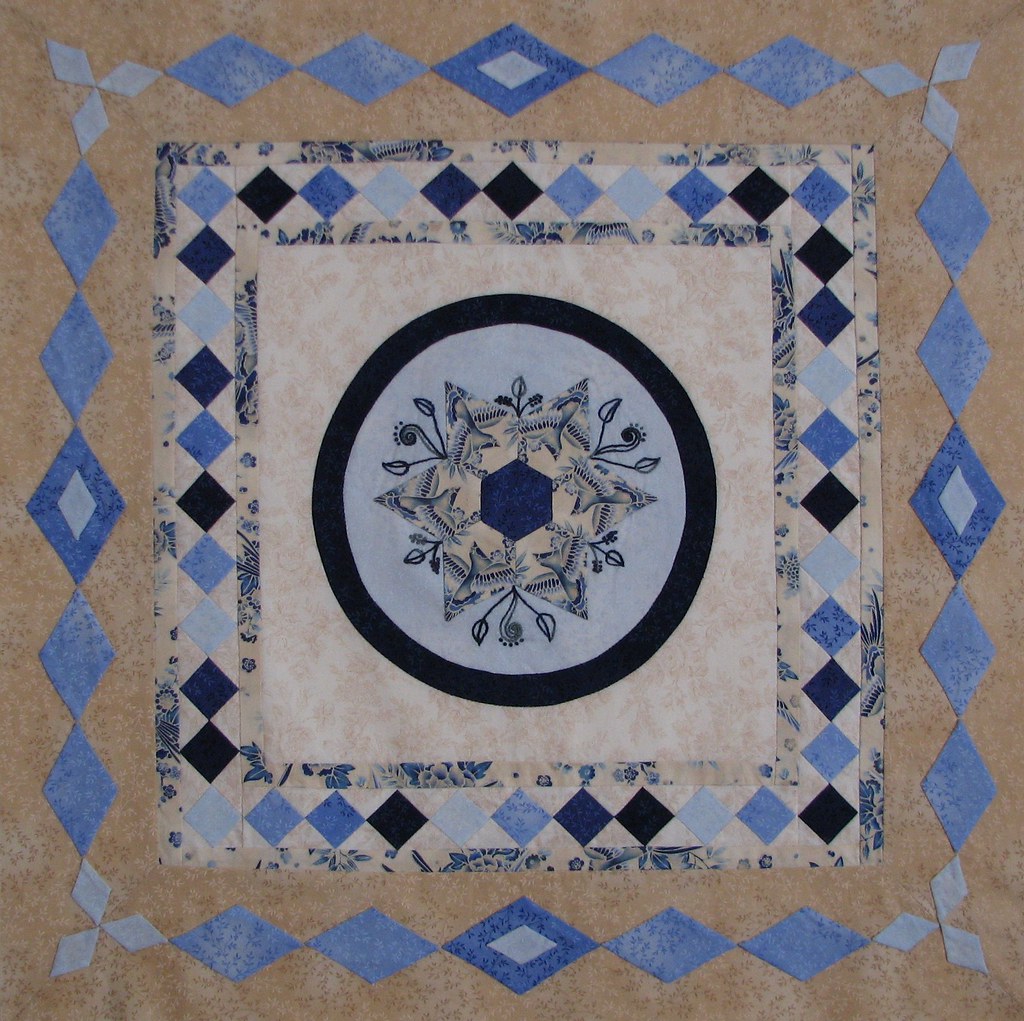- I don't spend a lot of time thinking about fabric choices. I try to work quickly. If I like something I will go with it and if I'm not sure I will either set it aside and think about it or discard the combination right way.
- I like to play with my fabric. I will put oodles of fabrics on a big table. I move them around and sometimes I’ll see a colour or print combination that really works and it is often a combination that I wouldn't have thought about.
- I try to use fabrics that are the same style. For example I wouldn’t combine children’s prints with Civil War prints.
- I think about the "tone" of my quilt. I am fond of muddy or earthy tones. A little bit of bright thrown in with earthy or muddy tones will make a quilt sparkle but a lot of brights will mute the effect of the earthy tones/muddy tones. If I want a bright quilt then a little bit of muddy colours will make the brights really shine. If I use equal amounts it just doesn't work because neither stands out.
- I think about what the overall colour of my quilt will be. The more of that colour I use the more likely the quilt will read that colour even though other colours are used.
- I don’t match fabrics when I am buying. I just buy fabrics that I like; I figure that my tastes don't really change so the new fabric will probably work with what I've already got in my stash.
- Colour is important but value is more important. Value is the lightness or darkness of a fabric when compared to another fabric. I try to make sure that there are lights, mediums and darks in most blocks. The eye sees value first and colour second.
- When I make a scrap quilt I try to repeat some of fabrics in more than one block. This makes the quilt look more cohesive. In this way I don't have to worry that each fabric goes with all of the others. As long as some of them are repeated they will all work together!
- Using a single fabric for the path in a hexagon quilt will separate the blocks and it also makes the quilt look more polished because it is a fabric that flows throughout the quilt.
- I like to make little 3” nine patches with my scraps. It is a great way to learn about colour and value. When I do this I think of colour combinations I would never have considered. If the block doesn’t look beautiful it will still work in a quilt because it is small but if it works, I have a good idea for combining colours for another quilt! If the block looks really bad I can take it apart and make something different or I can just throw it out!
The last step was to attach the upper left corner....just one long seam and GG would be a hexagon quilt top! I am so pleased with how this quilt has turned out. The path fabric appears grey but in fact it is a very dull, faded pale peach.
The final step is to add narrow border strips around the quilt top. If I were to just place border strips on the quilt with the right sides together and stitch the border to the quilt top by machine I would have to cut through the hexagons at the edges and that would change the look of my partial diamonds, many of which were fussy cut for effect. I don't want to do that so I am going to add a narrow border to give the quilt straight edges. My plan is to applique the quilt to the borders. I want to do it this way for three reasons:
- I do not want to cut through my hexagons,
- a narrow border will make quilting the hexagons at the edge easier (it gives me something to hold when I quilt) and
- I want flat, smooth, straight edges to make it easier to attach the binding when the quilting is done.
Until I post again, happy sewing!
Karen H















































